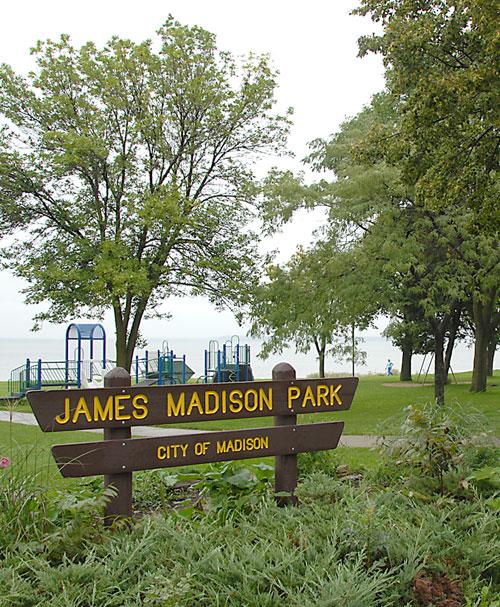April is Earth Month, and the city of Madison is kicking off a year-long celebration of 50 years of conservation parks with several events.
Madison Parks Public Information Officer Ann Shea said the parks will have “talk and walk” conservation park tours with staff once a month beginning in May until October. The first tour commemorating the 50-year anniversary is May 11 at Edna Taylor Park.
Other spotlighted parks include Owen Park and Cherokee Marsh, North Unit. Shea said Madison Parks will release a video on their YouTube channel that provides information about each of the three parks’ past, present and future.
Conservation staff is focused on preserving and enhancing nature within the parks for people to enjoy, Shea said.
“[Conservation parks are] uniquely managed in a way that helps promote the natural habitat at a park,” Shea said. “It’s getting it back to those native plants that benefit our pollinators that are out there, benefit the environment. And it’s restoring that but still allowing access for people, not pets but people, to get out there and enjoy nature.”
To celebrate Earth Day, Shea said Madison Parks created the Earth Day Challenge. The Earth Day Challenge is an annual event where volunteers are invited to pick up trash, sticks and debris in the parks. This year, the Earth Day Challenge is April 23, and volunteers can sign up to participate on the Madison Parks website.
Shea said the Earth Day Challenge has grown since its inception about 20 years ago, and it’s incredible that so many people volunteer to clean up the parks. The Madison Parks have hundreds of volunteers who become the content experts of each park, Shea said.
“We could not do it without them, we absolutely could not do it without them,” Shea said. “They’re out there, they’re doing the work, they’re working with our conservation staff and, you know, we support them, they support us and it’s a really great partnership.”
In the future, Shea is looking forward to seeing the creation of more parks, some of which will be connected to the Ice Age Trail. Shea also said that she’s excited to bring goats back to the parks to eat weeds and maintain the land.
Shea encouraged people to visit parks near them. During the pandemic, she said it’s been more important than ever to get outdoors.
“What better way to do that other than a conservation park, where there’s little distraction other than the birds chirping and the breeze blowing?” Shea said. “Those are the things that make conservation parks unique. You’re not going to have a basketball court or a soccer game going on. You’ve got nature.”
Shea is excited by students visiting the parks and keeping up with the parks on social media. She’s looking forward to each of the events for the 50-year anniversary celebration as well as the Earth Day Challenge.
According to Beers-Bascom professor emeritus and senior fellow with the Aldo Leopold Foundation Stan Temple, Earth Day was one of the first global events that made people think about their relationship with the environment, and it traces all the way back to Wisconsin.
Earth Day was introduced by Wisconsin Sen. Gaylord Nelson in 1970, and Temple said it’s an important event in the history of the conservation movement.
But conservation has a much longer history than Earth Day in Wisconsin. Temple said the University of Wisconsin has also played a large role in the development of conservation.
Several well-known names on campus are actually important contributors to the conservation movement. Temple said Increase Lapham, John Muir, Thomas Chamberlin, Franklin King, Frederick Jackson Turner, the LaFolletes, Charles Van Hise, Edward Birge, Chauncey Juday, Arthur Hasler, Aldo Leopold and Gaylord Nelson are all important figures in conservation that are commemorated on campus.
“There are all these reminders that are just scattered all across campus and all kinds of disciplines that are reminders of how important the university and the state of Wisconsin have been in the history of conservation,” Temple said.
Temple said it’s important that UW makes conservation something that students are exposed to no matter what their major is, and UW has done a good job of making it span across disciplines and departments.
Though UW is doing a good job of prioritizing conservation, Temple said the state of Wisconsin has fallen behind in its conservation efforts.
“Until fairly recently, [Wisconsin] has always been known as a leader among the states in sort of moving conservation forward,” Temple said. “And, you know, in recent years it’s been kind of sad to realize that that position of leadership has really disappeared, we’re no longer regarded as a leader. In fact, in many ways, we’re regarded as kind of going the wrong direction and retrenching in our interest in conservation.”
Temple said the environment has evolved into a partisan issue, which holds back policy changes and innovations that would help the conservation movement.
Despite some setbacks, Temple is heartened to see that students are interested in courses that have to do with the environment and he imagines that their interest will carry over into their lives after graduation.


